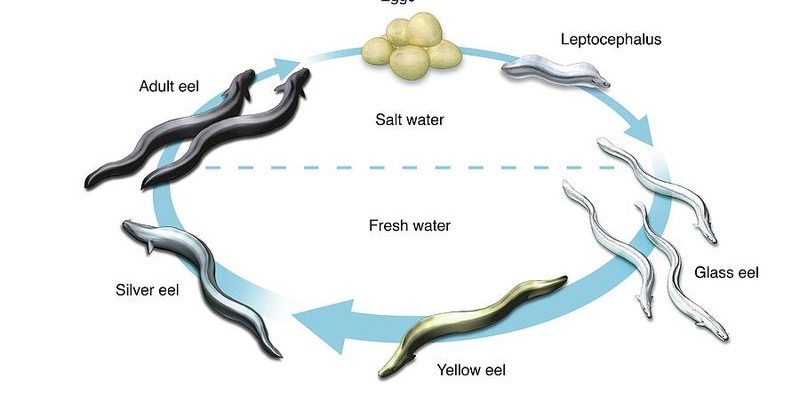
Vinegar eels, scientifically known as *Turbatrix aceti*, are often overlooked due to their size. But their reproduction is a whirlwind of activity that can make any nature enthusiast take notice. In this article, we’ll dive into the ins and outs of vinegar eel reproduction, covering everything from their mating rituals to how they lay eggs and what happens to the larvae.
Understanding Vinegar Eels
Before we jump into mating and reproduction, let’s get to know these tiny creatures. As I mentioned earlier, vinegar eels are nematodes that thrive in acidic environments. You might find them swimming around in your vinegar, especially if it’s unfiltered. They’re usually about 1 to 4 millimeters long, which is why they can be easy to miss if you’re not looking closely.
One of the coolest things about vinegar eels is their ability to survive in harsh environments. They have a simple life cycle, and their resilience enables them to bounce back quickly even in less-than-ideal conditions. Honestly, it’s like they have a secret to thriving amidst the chaos that is fermentation!
The Mating Rituals of Vinegar Eels
So, how do vinegar eels get together for a little romance? Here’s the thing: their mating process isn’t like what you might see in the animal kingdom with elaborate courtships or displays. Instead, vinegar eels engage in a simple yet effective method of reproduction.
During mating season, male vinegar eels will start to follow females, sometimes in a little dance. You might be picturing a charming ballet, but it’s more akin to a quick waltz in a vinegar bottle. These males have special structures that help them hook onto females to ensure successful mating. It’s not a fancy affair, but it’s solid and efficient.
Once the male successfully mates, the magic begins. The female releases fertilized eggs, which is where their fascinating reproductive journey continues!
Egg Laying: The First Step in New Life
After mating, female vinegar eels start the egg-laying process. This is where it gets interesting. Unlike many creatures that lay large batches of eggs, vinegar eels are rather modest. They usually lay a few eggs at a time, which are transparent and tiny—hardly noticeable in their vinegar playground.
These eggs are typically laid in clusters, often attached to surfaces within their environment. You might wonder why they do this. Well, laying eggs in a safe spot protects them from being washed away or eaten by predators, ensuring more larvae have a fighting chance.
The development time for these eggs can be influenced by the temperature and acidity of their environment. Warmer temperatures might speed things up, while cooler conditions slow them down. So yes, temperature plays a role in how quickly those little eels will hatch and join the world!
Meet the Larvae: The Next Generation
Once the eggs hatch, say hello to the larvae! This stage is where vinegar eels really come to life. The larvae are tiny, measuring just a fraction of a millimeter. The intricate details of their body structure are often visible only under a microscope, which adds to their mysterious nature.
As the larvae grow, they will begin to swim around in their vinegar habitat. Here’s the thing: they feed on bacteria and microscopic organic material, which is abundant in vinegar. It’s a bit like living in an all-you-can-eat buffet for them!
As larvae develop, they exhibit a few key changes. They’ll start to grow longer and gradually transition into juvenile eels. This stage sets the foundation for them to eventually become the vinegary adults we often overlook.
The Life Cycle of a Vinegar Eel
To understand vinegar eel reproduction, it’s essential to grasp the entire life cycle. From egg to adult, these eels go through several stages that keep the population thriving. After hatching from eggs, larvae will spend a few days feeding and growing.
As they mature, they undergo a series of changes, eventually becoming adults. It’s during this stage that they are capable of mating and continuing the cycle. This whole process can take anywhere from a few weeks to several months, depending on environmental factors.
When you think about it, it’s not just about reproduction; it’s about ensuring the survival of the species in tricky environments. This adaptability makes vinegar eels a fascinating study in nature’s resilience.
The Importance of Vinegar Eels in Ecology
You might be wondering why we should care about these little guys. Well, vinegar eels play a significant role in their ecosystem. They help break down organic materials and recycle nutrients in fermented environments. Without these tiny creatures, the balance of life in vinegar would be disrupted.
Moreover, their presence can indicate the health of the vinegar or other environments they inhabit. If you’re brewing your own vinegar, seeing vinegar eels can be a sign that you’re on the right track. They demonstrate that fermentation is happening as it should, and it’s a bit of confirmation that you’re doing things right in your fermentation journey.
Vinegar eel reproduction may seem small in scale, but it’s a remarkable glimpse into the complexity of life. From their mating dances to the emergence of larvae, every aspect reveals the beauty of nature’s design. These little nematodes are more than just microscopic inhabitants of your vinegar; they represent a whole ecosystem thriving in a small space.
Next time you’re sipping on that tangy vinegar, take a moment to appreciate the tiny stories happening within. Vinegar eels remind us that life, no matter how small, has its own secrets and splendor. Whether you’re a vinegar enthusiast or a curious learner, the reproductive cycle of vinegar eels offers plenty of inspiration and insights into the wonders of the natural world.

